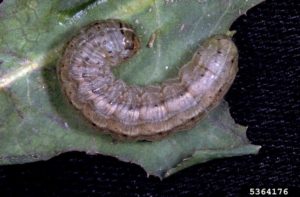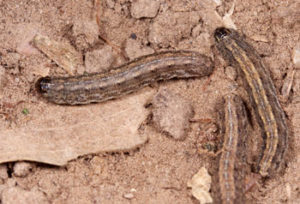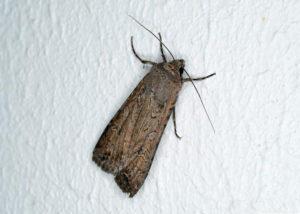Miller Moth/Army Cutworm (Euxoa auxiliaries)
Miller moth is the adult form of the army cutworm that is the latter’s larval stage. They are indigenous to North America, with the larvae being infamous for consuming canola and alfalfa.
cdn.sentinelcolorado.com
Scientific Classification
- Family: Noctuidae
- Genus: Euxoa
- Scientific Name: Euxoa auxiliaries
Description and Identification
Caterpillar
The larvae have a greenish-grey or greenish-brown body with a brown line running through its body and white splotches. Its brownish-gray head has pale brown spots all over. If threatened or disturbed, these larvae curl up, forming a C-shaped structure. They have an overall length of about 4 cm.
Adult Moth
Sexual Dimorphism: Present
Males appear brownish, while females are gray.
Color and Appearance:
Forewings: When opened, it appears dark grayish-brown with markings resembling a kidney bean all over. When closed, the color remain the same with fewer markings visible.
Hindwings: When opened, it has a light grayish-brown coloration with wavy white lines. When closed, the color and pattern remains the same.
Average Wingspan: 3.81 – 4.44 cm
Flight Pattern: Consistent
Season: May – July
Egg
The eggs appear small, looking like white beads laid under leaves in rows or masses. They hatch into larvae in 8 – 10 days.
Quick Facts
| Distribution | Throughout North America |
| Habitat | Wheatfields, gardens |
| Predators | Ground beetles, birds, bats |
| Lifespan of Adults | One month |
| Host Plants | Alfalfa, canola, barley, oats, mustard, field corn, canola, sugar beat |
| Diet | Nectar of wildflower |
Did You Know
- They are a seasonal pest primarily seen in Kansas, New Mexico, Colorado, and Wyoming in spring, while in summer, they go to higher elevations.
- These moths get their name because the fine scales they have on their wings may easily be rubbed similar to the dusty flour covering a miller’s clothes.
Scientific Classification
- Family: Noctuidae
- Genus: Euxoa
- Scientific Name: Euxoa auxiliaries








